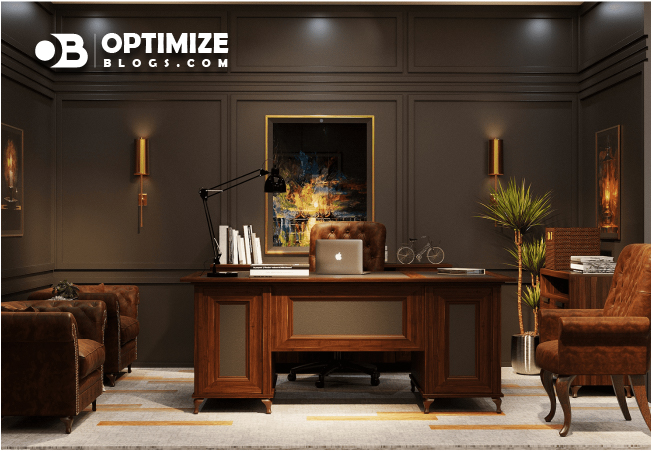
The design and layout of your workspace play a significant role in your productivity, comfort, and overall well-being. Whether you work in a traditional office, a home office, or a shared workspace, selecting the right office furniture is crucial. In this comprehensive guide, we will explore the factors to consider when choosing office furniture, the benefits of ergonomic design, and practical tips to create a workspace that enhances your efficiency and comfort.
The Importance of Office Furniture
Office furniture is more than just a collection of chairs, desks, and storage units; it's an essential component of your work environment. Here's why choosing the right office furniture matters:
Productivity
Well-designed office furniture can help you stay organized, reduce distractions, and create an efficient workflow, ultimately boosting your productivity.
Comfort
Ergonomically designed furniture supports your body and minimizes the risk of discomfort and fatigue, allowing you to focus on your tasks without physical strain.
Health and Well-Being
The right furniture promotes good posture and reduces the risk of musculoskeletal issues, ensuring your long-term health and well-being.
Aesthetic Appeal
A well-furnished workspace creates a professional and inviting atmosphere, enhancing your motivation and mood.
Organization
Properly chosen furniture helps you keep your workspace organized, making it easier to find documents, supplies, and tools.
Factors to Consider When Choosing Office Furniture
Before diving into the world of office furniture shopping, consider these key factors:
Workspace Size and Layout
Determine the available space and layout of your workspace. Measure the dimensions and consider the placement of windows, doors, and electrical outlets.
Functionality
Think about the specific tasks you perform daily. Your furniture should support your work activities, whether that involves desk work, meetings, brainstorming sessions, or video conferences.
Ergonomics
Prioritize ergonomic design to ensure that your furniture promotes good posture and comfort. Ergonomic chairs, desks, and accessories are essential for long hours of work.
Aesthetic and Style
Choose furniture that aligns with your personal style and the overall aesthetic of your workspace. A harmonious and visually appealing environment can boost your motivation.
Quality and Durability
Invest in high-quality furniture that can withstand daily use and last for years. Quality furniture is a long-term investment in your comfort and productivity.
Storage Needs
Consider your storage requirements for documents, office supplies, and personal items. Desks with built-in storage or separate filing cabinets may be necessary.
Budget
Set a budget for your office furniture, but be mindful of the balance between cost and quality. Quality furniture is an investment that pays off in the long run.
Ergonomic Office Furniture: Benefits and Features
Ergonomic office furniture is designed with the well-being of the user in mind. Here are some benefits and features of ergonomic furniture:
Improved Posture
Ergonomic chairs and desks encourage proper posture by providing lumbar support, adjustable heights, and comfortable seating options.
Reduced Strain
Ergonomic accessories, such as keyboard trays and monitor stands, minimize strain on your wrists, neck, and back.
Customization
Ergonomic furniture is highly customizable, allowing you to tailor your workspace to your unique needs and preferences.
Increased Productivity
Comfortable and ergonomic furniture helps you stay focused and minimizes distractions, enhancing your overall productivity.
Health Benefits
By reducing the risk of musculoskeletal disorders and discomfort, ergonomic furniture contributes to your long-term health and well-being.
Practical Tips for Choosing Office Furniture
Here are some practical tips to guide you in selecting the right office furniture for your workspace:
Start with the Basics
Begin with essential pieces such as a desk and an ergonomic chair. These are the foundation of your workspace.
Test Before You Buy
If possible, test the furniture in person to ensure it meets your comfort and functionality requirements. Sit in chairs and try out desks to assess their suitability.
Prioritize Ergonomics
Invest in ergonomic furniture that supports your body and promotes good posture. Pay attention to features like lumbar support, adjustable height, and armrests.
Consider Storage Solutions
Evaluate your storage needs and choose furniture with built-in storage or complementary storage solutions like filing cabinets and shelves.
Think About Mobility
Consider furniture with wheels or casters for added mobility, especially if you need to reconfigure your workspace frequently.
Mind the Aesthetics
Choose furniture that complements the style and design of your workspace. Harmonious aesthetics can create a motivating work environment.
Measure Your Space
Measure the available space in your workspace and ensure that the furniture you choose fits comfortably without crowding the area.
Plan for Cable Management
Plan for cable management solutions to keep wires and cables organized and prevent clutter.
Stay within Your Budget
Stick to your budget, but remember that quality furniture is an investment in your comfort and productivity.
Future-Proof Your Choices
Choose furniture that can adapt to changes in your work needs and technology requirements, allowing your workspace to evolve with you.
Conclusion: A Workspace Tailored to Your Needs
Selecting the right office furniture is a crucial step in creating a workspace that enhances your productivity, comfort, and overall well-being. By considering factors such as functionality, ergonomics, aesthetics, and quality, you can curate a workspace that suits your unique needs and preferences. Remember that your office furniture is an investment in your professional success and personal comfort, making it essential to choose wisely. A well-furnished workspace is not just a place to work; it's a space that supports your goals and inspires your best work.






